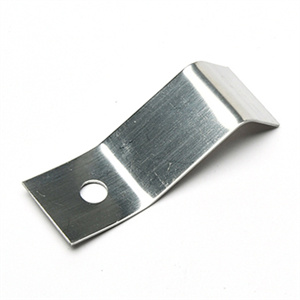The heat treatment of Flat Springs is an important process step to improve its mechanical properties, increase durability, and stability. Heat treatment can affect the key properties of Flat Springs, such as elasticity, hardness, strength, and corrosion resistance, by altering the microstructure of the material.
The following are some main aspects of Flat Springs heat treatment:
Eliminating residual stress: During the manufacturing process of Flat Springs, residual stress may occur inside the material due to cold working, bending, or other forming processes. These stresses may cause deformation or failure of the spring during use. By heat treatment, such as annealing or aging, these residual stresses can be eliminated or reduced, improving the stability and reliability of the spring.
Adjusting hardness and elasticity: By controlling the heating temperature, holding time, and cooling rate during the heat treatment process, the hardness and elasticity of Flat Springs can be changed. Harder springs may have higher rigidity and load-bearing capacity, but may sacrifice some elasticity. On the contrary, softer springs may have better elasticity and flexibility, but may have lower load-bearing capacity. According to the specific application requirements, suitable heat treatment parameters can be selected to balance hardness and elasticity.
Improving corrosion resistance: Some heat treatment processes, such as quenching and tempering, can enhance the corrosion resistance of Flat Springs by forming a protective oxide layer or changing the chemical composition of the material. This is particularly important for springs used in corrosive environments.
Optimizing dimensional stability: Heat treatment can also help Flat Springs maintain dimensional stability during subsequent use. By eliminating residual stress and adjusting the microstructure of the material, size changes caused by temperature changes or other environmental factors can be reduced.
Improving fatigue life: Heat treatment can improve the fatigue performance of Flat Springs, giving them a longer service life under repeated loading and unloading conditions. Proper heat treatment can reduce the tendency of materials to crack and fatigue failure.
When performing heat treatment on Flat Springs, the following points should be noted:
Choose the appropriate heat treatment process: Based on the material type, size, and performance requirements of Flat Springs, choose the appropriate heat treatment process. Different materials may require different heat treatment parameters to achieve optimal results.
Controlling heat treatment parameters: Heating temperature, holding time, and cooling rate have a significant impact on the performance of Flat Spring. Accurate control of these parameters is required to ensure the desired performance is achieved.
Pay attention to the treatment after heat treatment: After heat treatment, Flat Springs may require further surface treatment, such as cleaning, coating, or packaging, to protect it from corrosion or other environmental factors.
